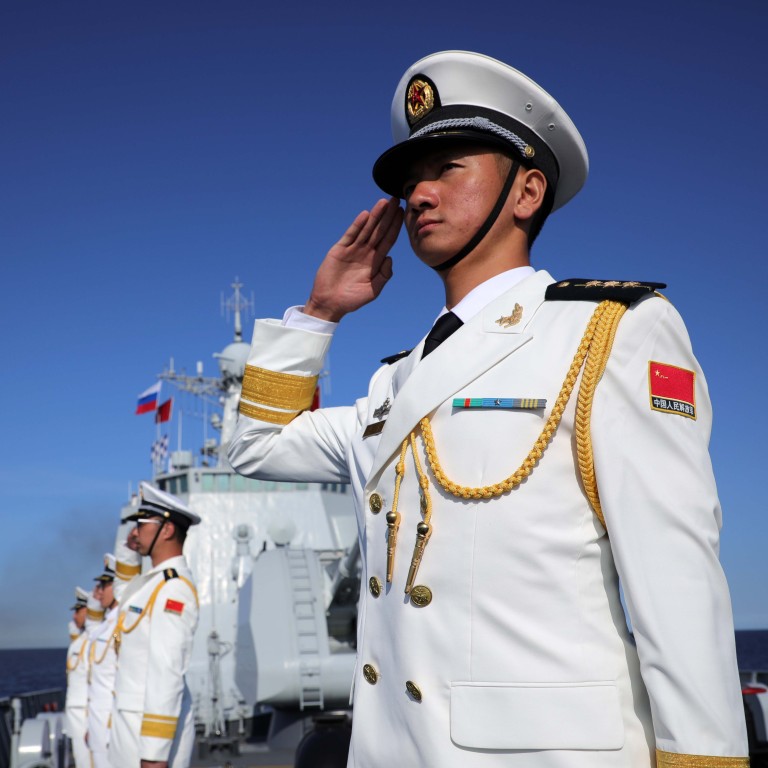
Navy Day parade the latest sign of stronger military ties between China and Russia
- Chinese destroyer joins annual naval display held near St Petersburg amid a series of operations between the two countries
- Joint events suggest they have entered a ‘quasi alliance’ that is partly about putting pressure on US President Donald Trump, analyst says
A Chinese destroyer’s taking part over the weekend in Russia’s annual Navy Day parade amid a series of operations between the two countries, suggests they have stepped up military ties, according to observers.
The PLA Navy’s Xian guided-missile destroyer joined about 40 Russian warships for the naval display near St Petersburg on Sunday.
The Type 052C warship had been on a mission in the Gulf of Aden and travelled thousands of miles to the Baltic city for the parade.
It came just days after China and Russia carried out their first joint long-range air patrol that passed through the air defence identification zones of Japan and South Korea over the East China Sea and Sea of Japan – also known as the East Sea.

Meanwhile, China will host some of Russia’s international war games – an annual competition involving the militaries of 10 countries – in its far western Xinjiang region later his week.
Others will be held in Russia, Kazakhstan, Belarus, India and Iran, according to state news agency Xinhua.
Li Lifan, a researcher with the Shanghai Academy of Social Sciences, said the joint events suggested military cooperation between China and Russia had been upgraded beyond counterterrorism and humanitarian missions to areas such as regional deterrence, and indicated they had entered a “quasi alliance”.
“The upgrade in the China-Russia relationship is also about putting pressure on [US President Donald] Trump, who is seeking re-election,” he said, adding that there were tensions between both countries and the United States.

Beijing and Moscow have been edging closer militarily for a couple of years, with China becoming the first foreign buyer of Russia’s Su-35 fighter jets and S-400 missile system, and also reportedly taking part in the development of the next-generation S-500.
Tian Chunsheng, a Russia expert at the Chinese Academy of Social Sciences, said the two countries had been getting closer in recent years, with Russian President Vladimir Putin in power.
Explained: how this seaea became a geopolitical flashpoint
Their increasing closeness extended not just to the militaries but also to politics, economic and other areas, she said.
“This is especially the case because [Chinese] President Xi Jinping and President Putin have a great personal friendship, which has served to further push forward lots of cooperation,” she said.
Sunday’s event marked the second time a Chinese naval vessel had taken part in Russia’s Navy Day parade. The first time was in 2017.
China, Russia seek to rebalance military might in Asia-Pacific
The Russian fleet then sailed to the Yellow Sea for a joint exercise with the Chinese navy.
China’s Xian destroyer did not go unnoticed on the journey to the Baltic Sea; it was shadowed by British frigate HMS St Albans as it sailed through the English Channel, according to the Royal Navy.
The Indian navy was also invited to the parade and it sent Russian-built frigate INS Tarkash.

